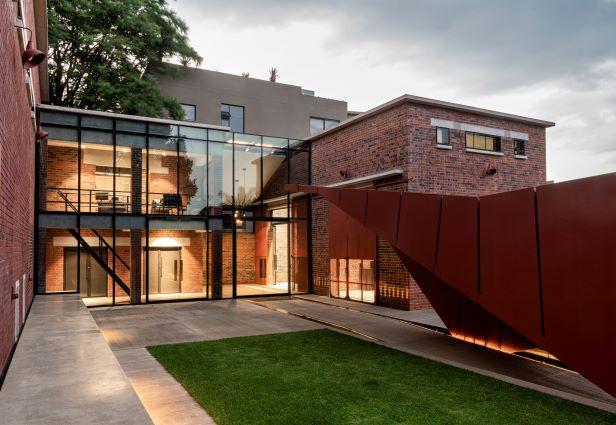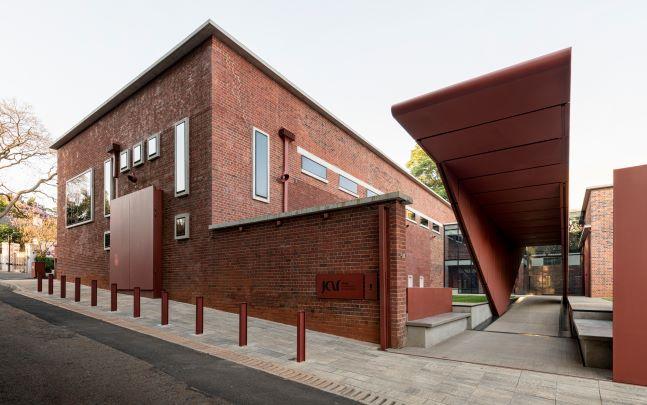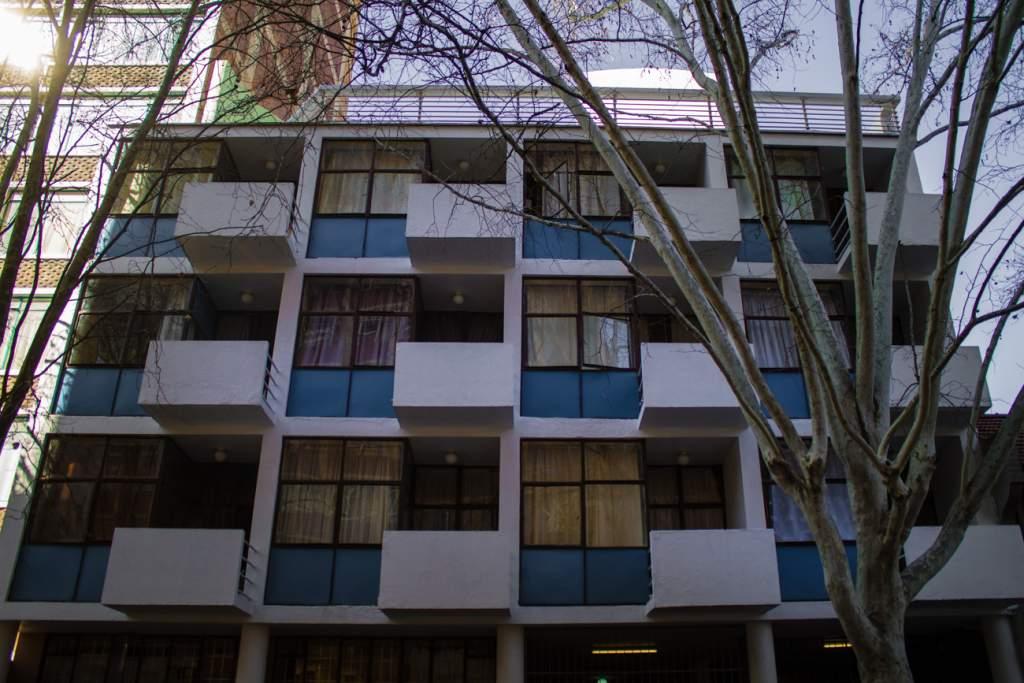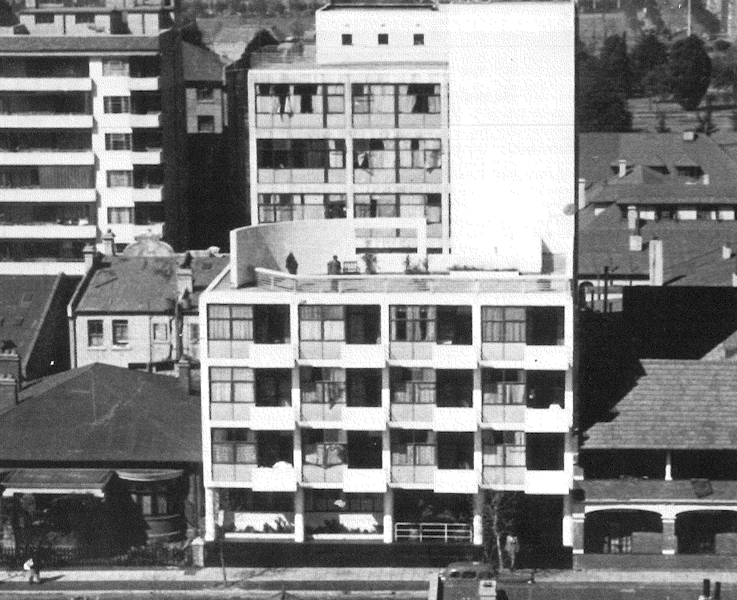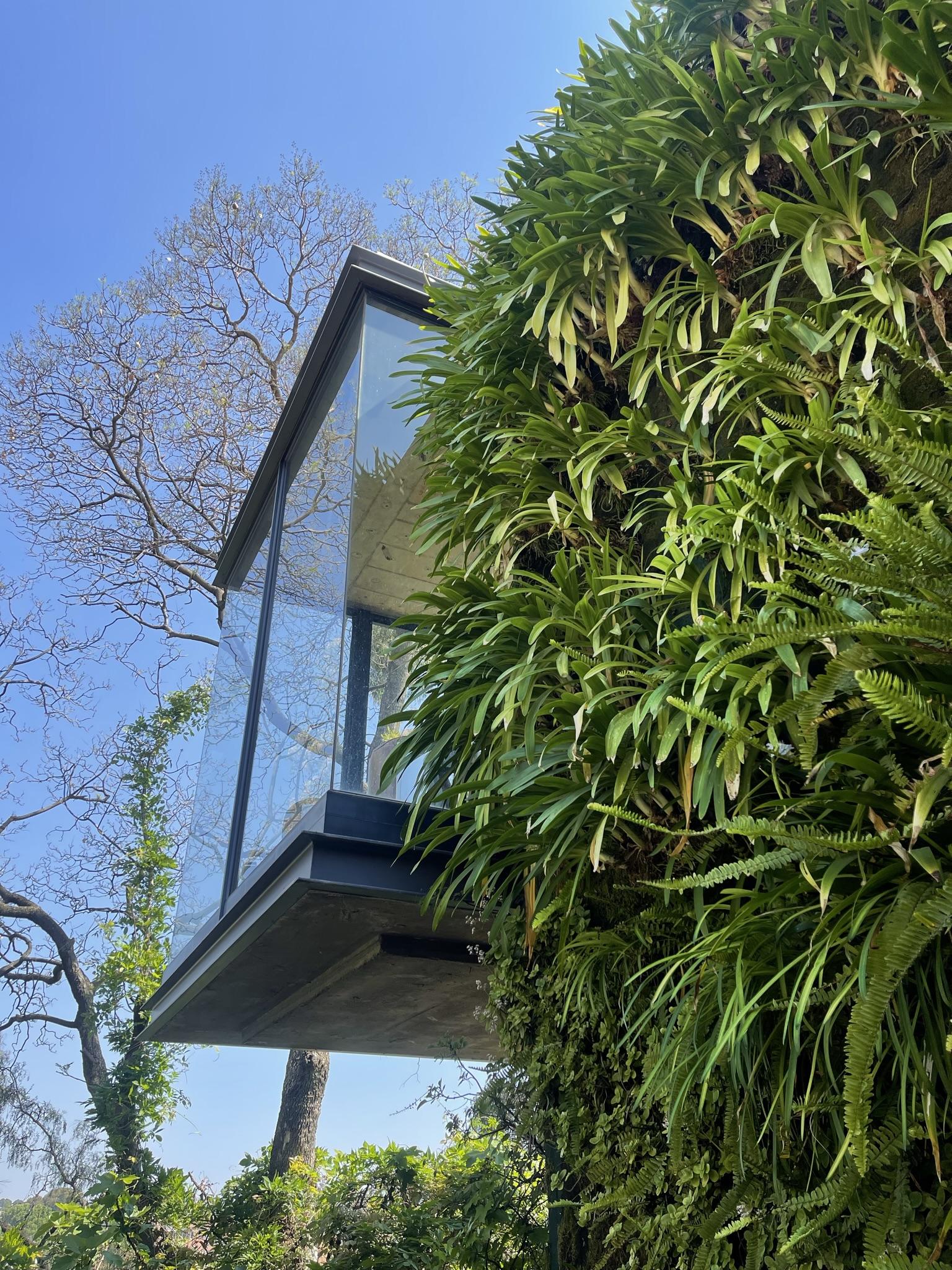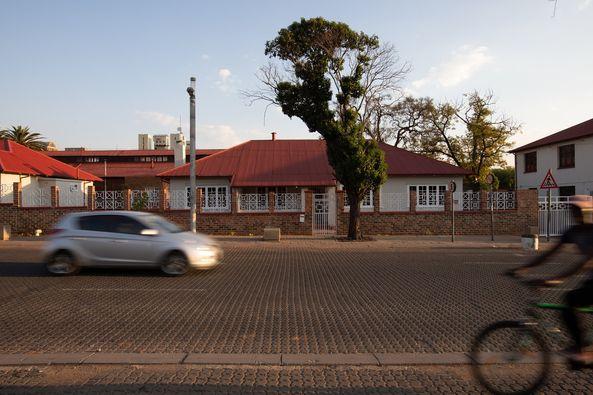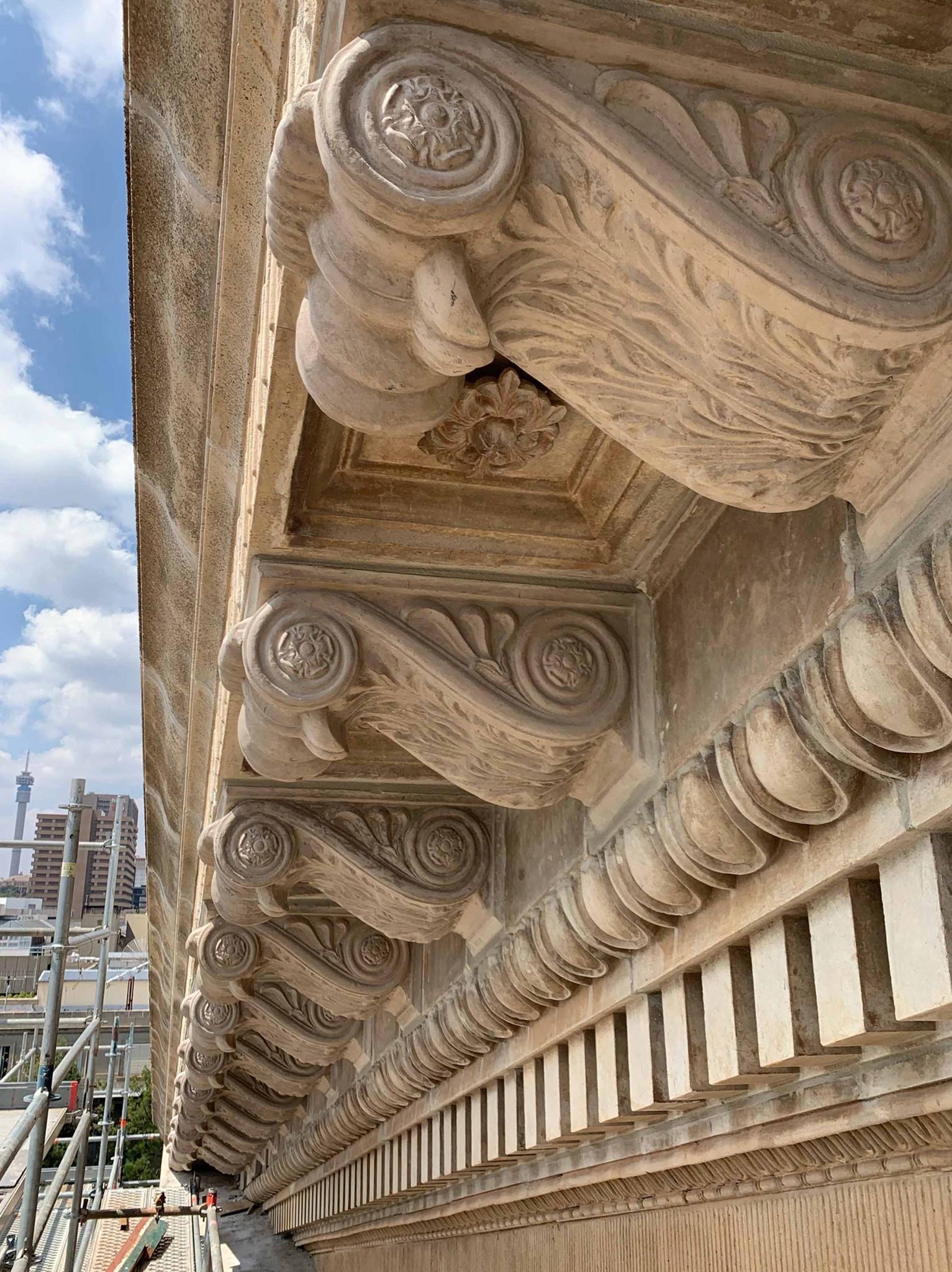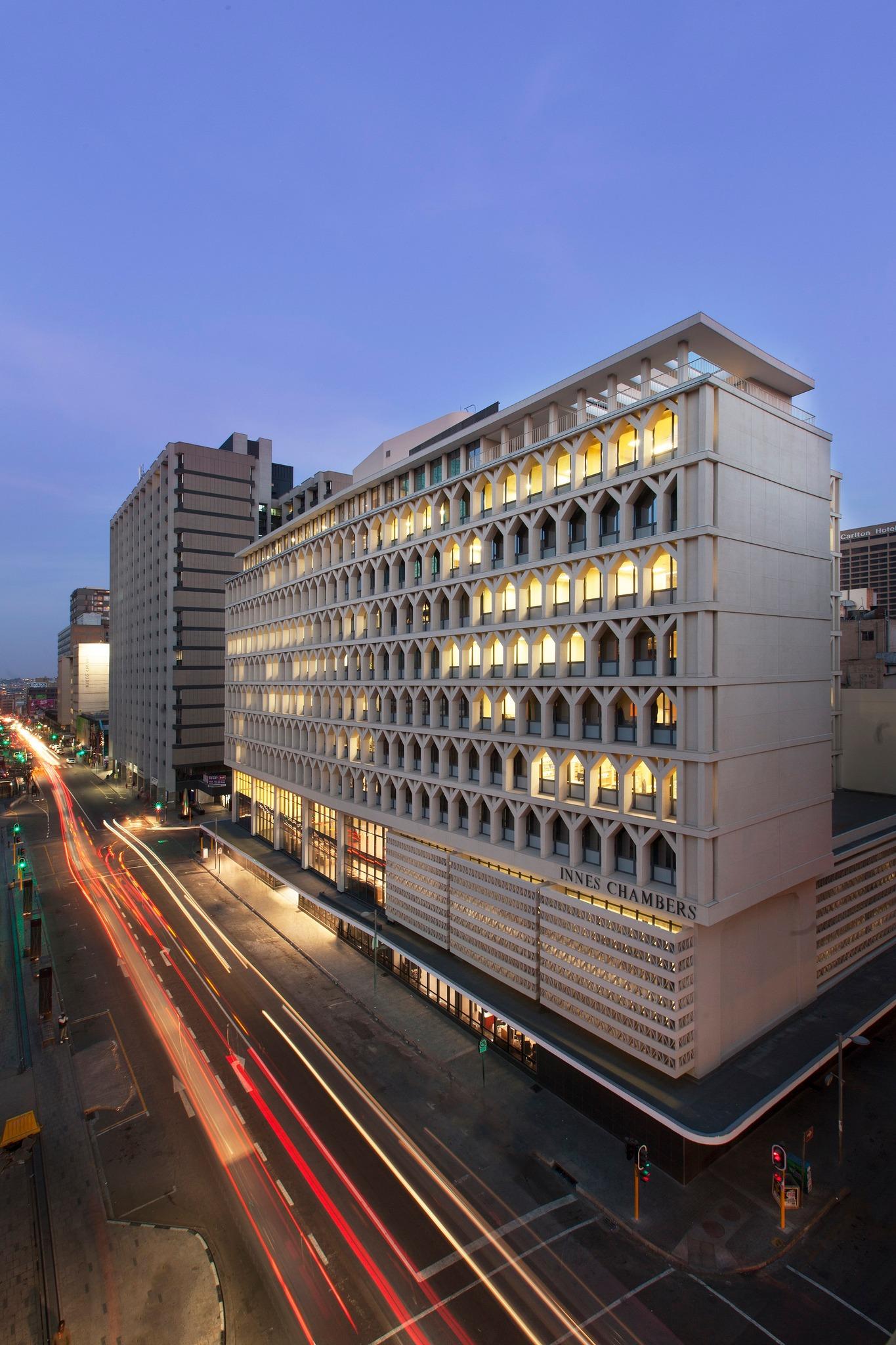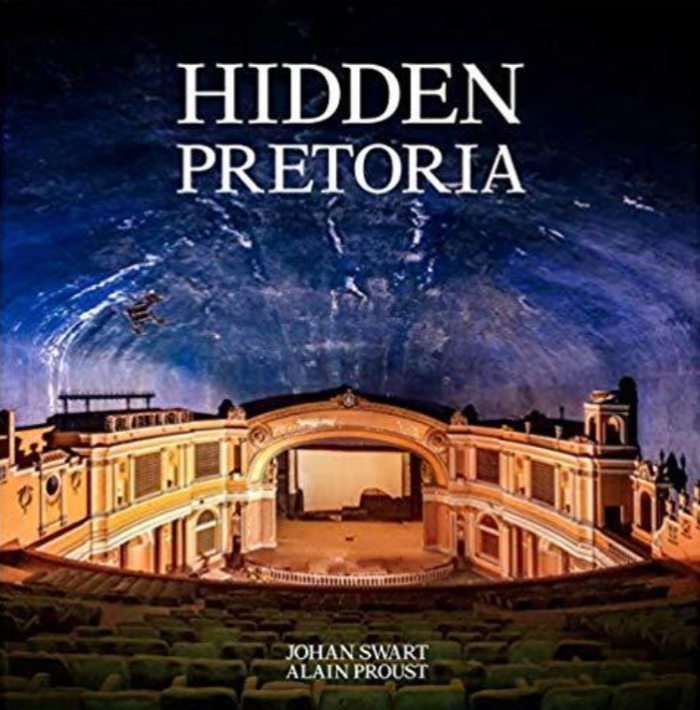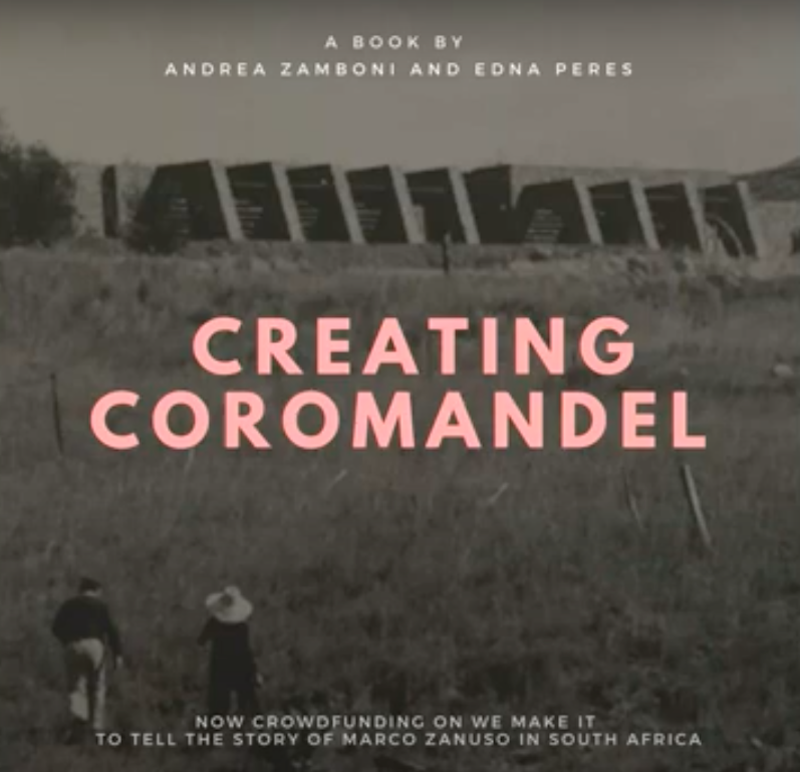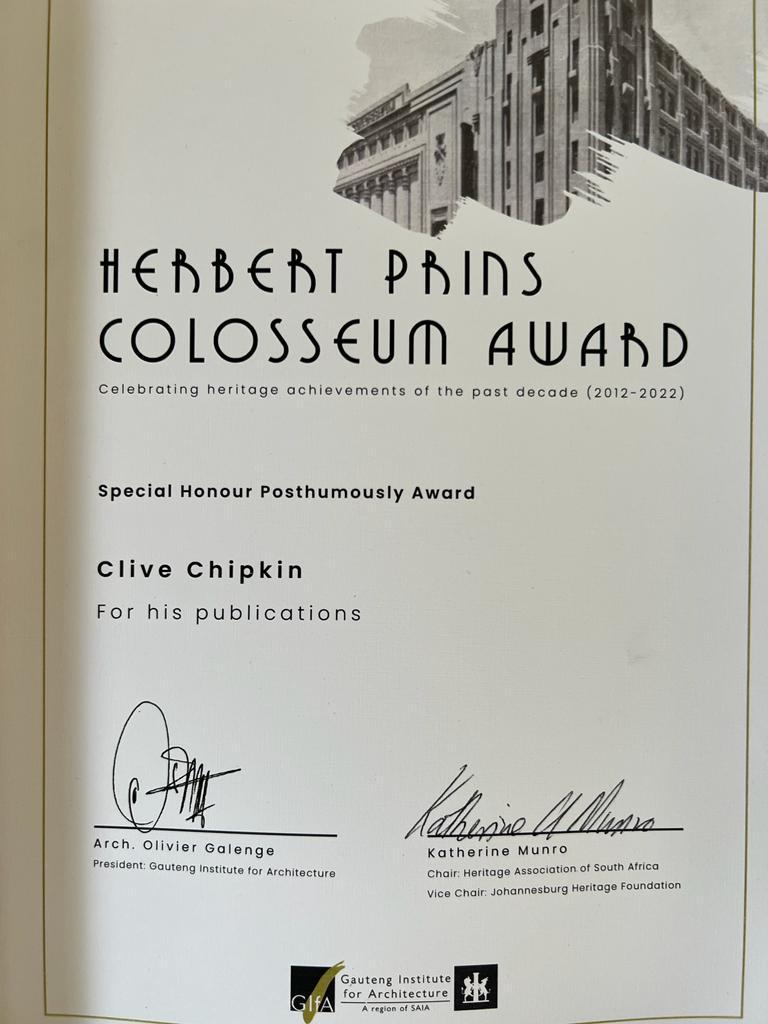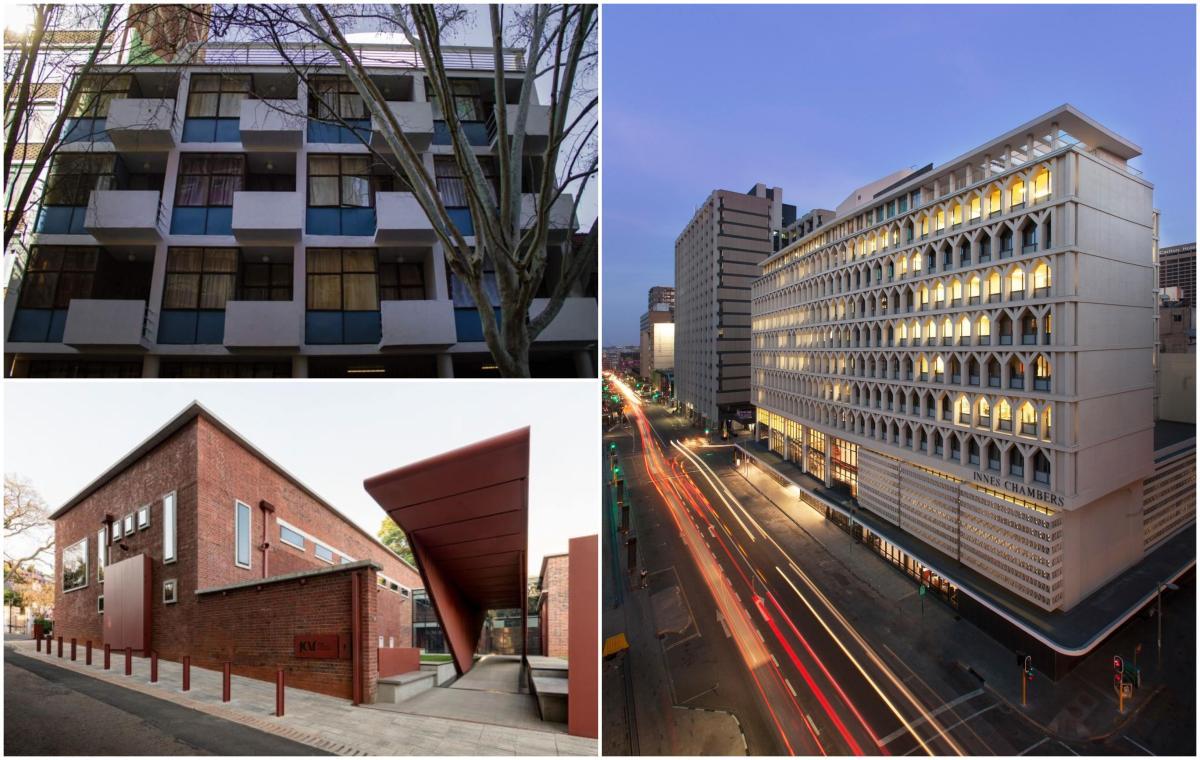
Disclaimer: Any views expressed by individuals and organisations are their own and do not in any way represent the views of The Heritage Portal. If you find any mistakes or historical inaccuracies, please contact the editor.
Congratulations to all projects and their architects who were recognised at the award ceremony.
1. Herbert Prins Colosseum Trophy and Heritage Award: Johannesburg Contemporary Art Foundation, StudioMAS Architects.
Conversion of Forest Town Sub Station into JCAF art gallery In essence the project entailed the conversion of an abandoned tram service station and electrical substation into a world class contemporary art gallery. The key design constraint was to work within the existing building fabric which was also heritage-protected, thus calling for meticulous renovations and well-considered additions rather than a new build. Beyond the limitations imposed by the heritage agency, the client had very strong ambitions to restore the building in a respectful way making it an extremely exciting project for us.
As this building has been around for a hundred years is it clearly well-rooted in its place. It has always been a prominent feature in Forest Town and has already had a life serving the town in a different way. The challenge was to give the building a new identity without changing its character. This started with the design of the sidewalks – they are generous in size and were designed without a kerb so there is no disconnect from the street.
A great deal of consideration went into how one enters the building. The main entrance is a pedestrian-only entrance with the new steel entrance structure which pokes its head over the wall, marking the way in. This structure sits along the old tram lines and honours its memory with illuminated steel channels on either side guiding one up the ramp. This structure also tailors one’s experience so that once you enter off the street you become acutely aware that you are entering a special space. The entrance structure hides and then reveals elements of the building as you move up towards the reception.
On either side of the folded steel entrance structure are two green courtyards which bring softness to the space and allow room for reflection, gathering and sharing with others.
Johannesburg Contemporary Art Foundation Building
2. Small Scale Building Award: Aiton Court, Mayat Hart Architects
Aiton Court, completed in 1937, is an early international style modernist apartment block located in Hillbrow. The building was designed by pioneering Wits graduates Angus Stewart and Bernard Cooke. Located on a small former suburban stand, the building is formed by two blocks, orientated northwards towards the sun. The efficient design contains 25 bachelor apartments and 18 single rooms with shared ablutions. The lower street facing block is raised on piloti creating an entrance foyer and accommodating a caretaker’s flat. Shared social spaces include the ground floor courtyard and a roof top solarium. The building is both architecturally and socially significant. In the 1980’s, when owned by the Rawat Family, it was one of the first buildings to break apartheid segregation laws by welcoming black residents, with the building becoming a base for political activities as well as a hiding place for political operatives. It was during this period that a mosque opened in two of the ground floor courtyard facing apartments, a feature of the building which has been retained.
After many attempts to have the building restored by Herbert Prins and Hannah Le Roux, it fell into disrepair and was high jacked. The buildings new owners wanted to renovate it as low-cost housing meaning that the restoration work had to be done on a low budget with conservation needs having to be balanced with commercial realities. This was used to work in the interest of conservation with the repair, restoration and reuse of original fabric favoured over replacement with skilled and semi-skilled local contractors used for the labour-intensive work. Priority was given to the restoration of public spaces which add greatest value to the residents.
The resulting process can best be described as sitting somewhere between repair and restoration.
Aiton Court
3. Small Scale Building Commendation: Kleine Schuur, Office 24/7
100 years marks the space between the original Herbert Baker house and the new additions and insertions. The project aimed for clarity in method in its intent to enhance the heritage house with contemporary sensibilities.
The tight constraints of the existing house meant that the new additions had to be designed to maximize space. This project was an exercise in smallness, asking how little space do we need to live in without compromising on comfort, how maximizing space is about sustainability.
A vertical garden carries a floating glazed box that hovers above the ridge and savours the view of Herbert Bakers elegantly proportioned and iconic house’. The articulation of the vertical garden wall is intended to make the structure disappear, hence emphasizing the cantilevered glass box.
There is a clear connector between the old and the new. This allows for a conceptual demarcation and reading of the two structures and acts as a buffer between the two pieces of architecture. A new spiral staircase inserted in the old wing of the house is a sculptural twist that connects to the upstairs pyjama lounge.
The language of the new is clearly contemporary, yet it does not challenge the architectural impact of the main house. Hence it is set back to be right up to the boundary wall allowing for maximum distance between itself and the main house. New mechanisms inserted into and around this heritage artefact reconfigure a new hybrid lifestyle - knitting a century of Parktown history into a spatial dialogue.
The floating glazed box
4. Small Scale Building Commendation: Newtown Workers’ Museum Cottages, Mayat Hart Architects.
Dating from the early 20th century, the Workers Cottages in Newtown, Johannesburg, form part of the Workers Museum Complex. The Workers Museum is located in a former black migrant workers’ hostel, with the adjacent cottages built for white staff and supervisors. The museum speaks of the harsh segregated labour practices in the city with the relative comfort of the adjacent cottages further highlighting the segregation and prejudice that existed between workers of different races.
The cottages, facing onto Mary Fitzgerald Square, had fallen into a state of disrepair and were left crumbling and unusable after a failed renovation project in the mid 2000’s. The project aimed to bring the cottages back to a condition where they could be used for offices for the Museum as well as spaces for various tenants and NGO’s that support arts, culture and heritage.
From the beginning the tight budget was used as a means to conceptually guide the project. Botched renovations and the stripping out of sections of the building were seen as an opportunity to reveal the underlying materiality of the building. The building was seen as a physical documentation of its own history with its original materiality, defects and quirks accepted as part of its character and significance. The intention of the project was always to bring back the original quality of the building and not have new interventions outshine the old. With this in mind the hand of the architect had to be kept very light, almost invisible. The existing buildings guided design decisions with only a slight reinterpretation necessary to show these as a contemporary layering onto the site. Wherever possible existing materials were reused and recycled, from windows and floor boards to bollards and recovered bricks.
Newtown Workers Houses
5. Specialised Restoration Award: The Restoration of the Neo-Classical Façade of the Robert Sobukwe Block, Kate Otten Architects.
The Central Block or Great Hall was the outcome of an architectural competition for the main buildings of the new campus for the University of the Witwatersrand. Convened in the 1920’s, first prize was awarded to the architect Frank Emley of Emley and Williamson. The project was duly tendered, and Barrow Construction were appointed, and the building completed in 1922.
The fine workmanship evident in the columns and the many different component parts was due to the very capable patternmakers employed by Barrow Construction. The accuracy and sharp edges of the concrete blocks speak to a high degree of excellent craftsmanship.
In 2020 pieces of concrete were falling from the facade onto the Great Hall steps. Closer inspection revealed long term weathering of the precast concrete blocks as the likely cause.
A temporary catch net was installed, but it was not until a substantial scaffold had been erected across the entire temple front facade that the scale and extent of the problem was properly defined. The decorative modillions were found to be significantly spalled and numerous other issues identified that required restoration.
The main contactor AJ Renovatum was appointed who in turn appointed Old World Concrete to make replicas of the modillions - and other items - using latex and glass fibre moulds. A decision was taken to not clean the building with high pressure cleaners as this would have stripped the 100-year-old patina. The facade was however carefully washed by hand with nylon brushes, a mild detergent and water.
The double pitched roof over the temple front was clad with a standing seam copper roof as a permanent and very durable solution. The restoration of the front steps and the floor of the loggia was also attended to.
Robert Sobukwe Block / Great Hall
6. Adaptive Reuse Award: Innes Chambers, Activate Architects.
Named after the appeal judge, Sir James Rose Innes, Innes Chambers is prominently positioned opposite the South Gauteng High Court on Pritchard Street, in the heart of Johannesburg CBD. Originally the offices of the Bar, Innes Chambers was purchased by the Department of Public Works in the early 2000's, earmarked for redevelopment as the Johannesburg offices of the National Prosecuting Authority.
The refurbishment of the building required the upgrading and replacement of all services, and insertion of a contemporary office accommodation programme. From the outset it was essential that the building meet current office accommodation and energy efficiency standards, without compromising the iconic aesthetic of the original design.
The expressionist movement Y-column screen sets Innes Chambers apart from its contemporary 1960s modern movement buildings. Influenced by prevailing international trends, Innes Chambers is an elegant slice of mid-century Brazil, carefully adapted to suit its downtown Johannesburg Location.
Clad in opalescent white mosaic, Innes Chambers has been restored to downtown landmark status, shimmering above the city traffic in the crisp Johannesburg sunlight.
Innes Chambers
7. Retrofit Award: BMW (South Africa), Boogertman + Partners
Controversially questioning the rigorous briefing requirements presented by BMW for the competition to refurbish the iconic building, dissolved the rigidity encapsulating previous solutions, thus enabling Boogertman + Partners to engage in creatively resolving the issues presented.
A Hans Hallen architectural classic, the BMW Head Office has been rejuvenated.
‘One can design a good building, but left in good hands, it can be better. It’s a good building. They improved it in many respects.’ Hans Hallen when visiting the refurbished building 2016.
The outer, modern dark brick façade of the building was retained, in stark contrast to the inner façade which was demolished to enable extension into the newly landscaped courtyard to create spatial energy, movement and amplify light. The transparency of this fully glazed façade, and the seamless indoor-outdoor flow was enhanced by the use of dynamic, solar tracking, fritted glass louvres.
Optimising the building envelope by the design of an adaptive interior space is facilitated by a number of carefully orchestrated interventions. The rigorous implementation of design concepts for green and sustainable building principles achieved the desired Green Star rating achievement – a 5* as built rating, with maximum points achieved in the Innovation and Energy categories.
The final product, a carefully engineered co-existence between the creative pursuit of reinventing a respected architectural icon, implementing an international corporate standard, fulfilling the needs of BMW (South Africa), creating a productive, pleasant working environment and extending the building’s lifespan by the implementation of sustainable, green building principles.
Light, lines and simplicity represent the internationally recognised BMW brand – design, passion, technology, innovation and attention to detail.
BMW Head Office
Research Publications
Hidden Pretoria by Johan Swart and Alain Proust received the Research and Publication award. Hidden Pretoria, the third book in a series after Hidden Cape Town (2016) and Hidden Johannesburg (2013), can be positioned relative to classic publications such as London Revealed (1989) and Colonial Houses of South Africa (1987), which continue to serve as valuable resources.
Book Cover
Prof Arthur Barker collected the Research & Publication commendation award on behalf of Edna Peres and Andrea Zamboni for their book, Creating Coromandel. Prof Barker wrote a chapter in the book titled 'Stones that Sing' where he discusses the architecture and legacy of Marco Zanuso and the place it holds in the South African regional adaptation of the architectural discipline and practice.
Book Cover
Special Honour Posthumously Award
Clive Chipkin is best known for his books Johannesburg Style and Johannesburg Transition.
Clive Chipkin received a posthumous award for his publications
Comments will load below. If for any reason none appear click here for some troubleshooting tips. If you would like to post a comment and need instructions click here.

